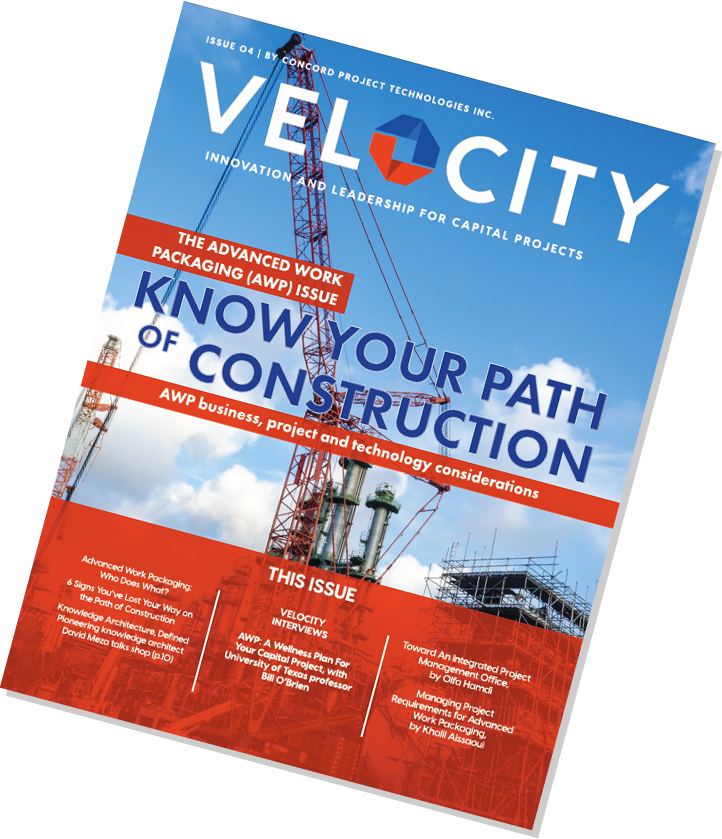What every executive needs to know to lead a capital project successfully, from start to finish.
“Knowledge is a process of piling up facts; wisdom lies in their simplification.”
~Martin H. Fischer
These words from the physician and scholar Martin Fischer remind us that sometimes, it is wise to step back and see how we can simplify all that we’ve learned, and I believe it’s time for us to do just that.
We now have a great deal of knowledge about how to run a successful capital project. From high-level conceptual applications such as Balanced Scorecard and Predictability Thinking™ to more in-depth, granular applications like the Advanced Work Packaging and Front-End Loading, we have dozens of new tools in our toolbox.
Still, having worked with dozens of teams over the past decade, I can say with confidence that the most successful capital projects have one simple, powerful thing in common: a proactive team of engaged executive leaders.
The list that follows is a summary of how proactive executives typically lead capital projects. The list is by no means exhaustive but provides a starting point to begin thinking about how you, too, can take a more proactive approach to your project leadership.
1 | Leverage Your Influence
It is a mistake to think that your daily actions and words have no impact on the day-to-day management of the project. Executive leaders have tremendous influence that touches every level of the organization. Proactive leaders are conscious of this influence and leverage it to their benefit. If they want to see predictable behavior from the project team and the various stakeholders, they work to embody and apply a predictable mindset, and to model predictable behavior themselves.
2 | Establish And Communicate Clear Objectives
Lack of clarity around business and project objectives doesn’t just cause problems in the C-suite; a lack of clarity cascades down through the entire project and causes even more significant problems for project and construction managers. Proactive, engaged capital project leaders set clear objectives, model and encourage predictable behavior, and reward those who follow suit.
3 | Staff Wisely
Proactive capital project executives understand that the decisions they make about staffing are critically important. Staffing choices must align with business and project objectives, and the process of vetting and hiring candidates must be thorough, nuanced, and focused on outcomes. Few decisions will impact project success as much as staffing decisions will, so staff wisely.
4 | Engage Proactively Throughout The Project
It’s not enough for capital project executives to engage with the project only at the major gates in the stage-gate process. Proactive capital project executives have a regular, predictable protocol for engaging with the project management team.
5 | Invest In Front-End Definition
Solid front-end definition is an investment. Proactive capital project executives understand that every single decision they make about whether or not to invest in definition will have costs and impacts later on. There are no rules to follow here, as every project is different — the key is to be conscious about these choices.
6 | Map The Risks
Risk is like energy: it never disappears; it just moves to different places. Proactive capital project executives understand that you don’t eliminate risk when you shift it to someone else; project systems are interconnected, and every stakeholder is affected regardless of who is formally shouldering the risk. Whether you’re on the contractor or Owner side of a business engagement, you need to understand where the risk is going, and where it is most likely to manifest. Only then can it be effectively monitored and addressed.
7 | Embrace A Hands-On Approach
As a capital project executive, part of your job is to monitor, mentor, and support project managers — the old-school ideas that executives don’t have to mix with front-line teams is outdated and undermines project effectiveness. Proactive executives are hands-on; they don’t micromanage, but they’re involved in crucial business decisions. They understand that the executive role is a people role, not just a business role.
8 | Get Trained
Modern executives must have a comprehensive understanding of capital project delivery models. They must be knowledgeable about what does — and doesn’t — impact capital project success. They must be familiar with the latest research and they must always be learning. The industry is evolving fast, and proactive capital project executives invest in the future.
These eight points can serve as a jumping-off point for further thinking about how you and your executive team can adopt a more proactive, engaged approach to your next capital project. If you’re looking for a guide, Concord®’s groundbreaking Predictability Package™ offers a robust suite of options for proactive executives, including one-on-one coaching and training options. Contact us today.





